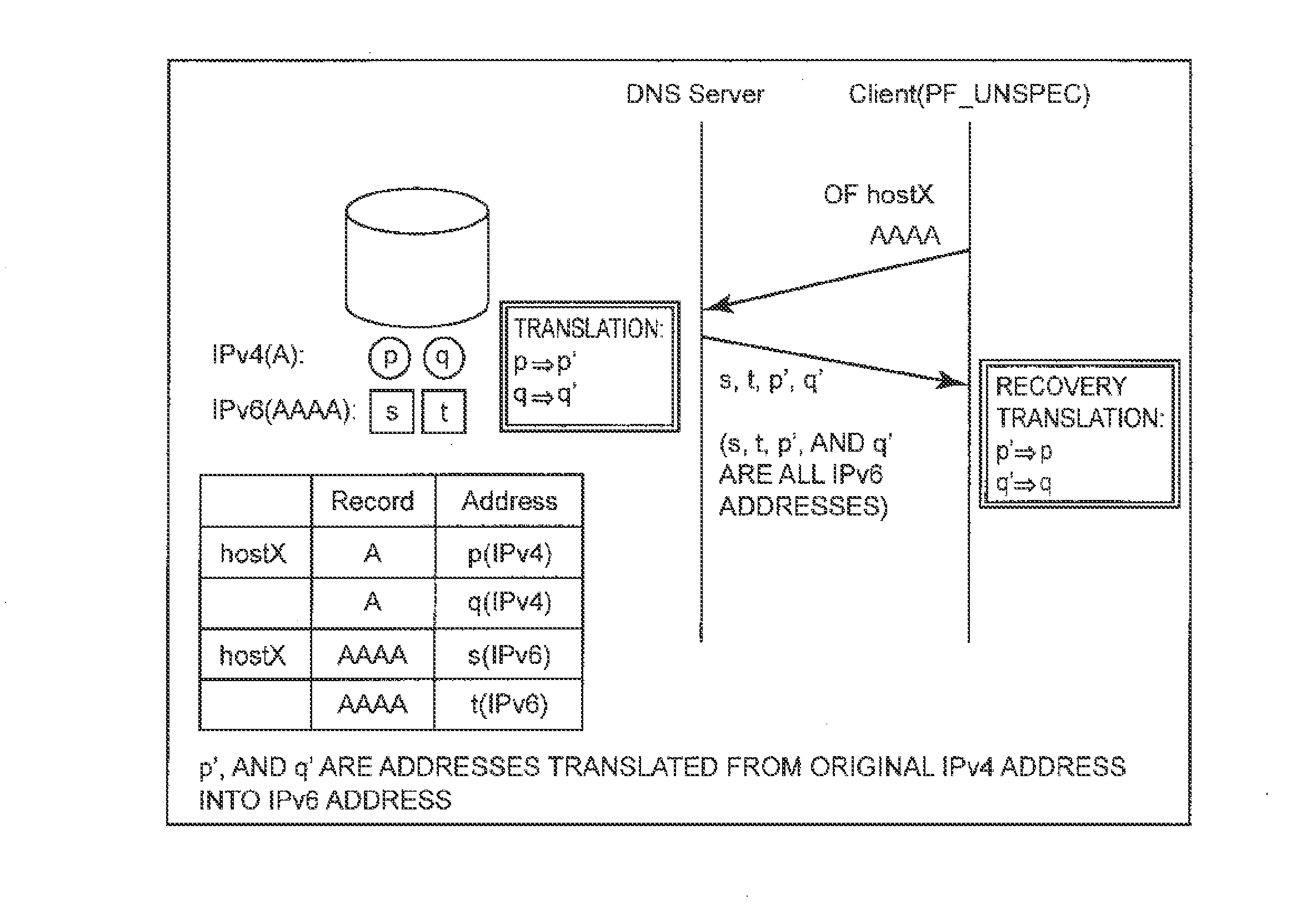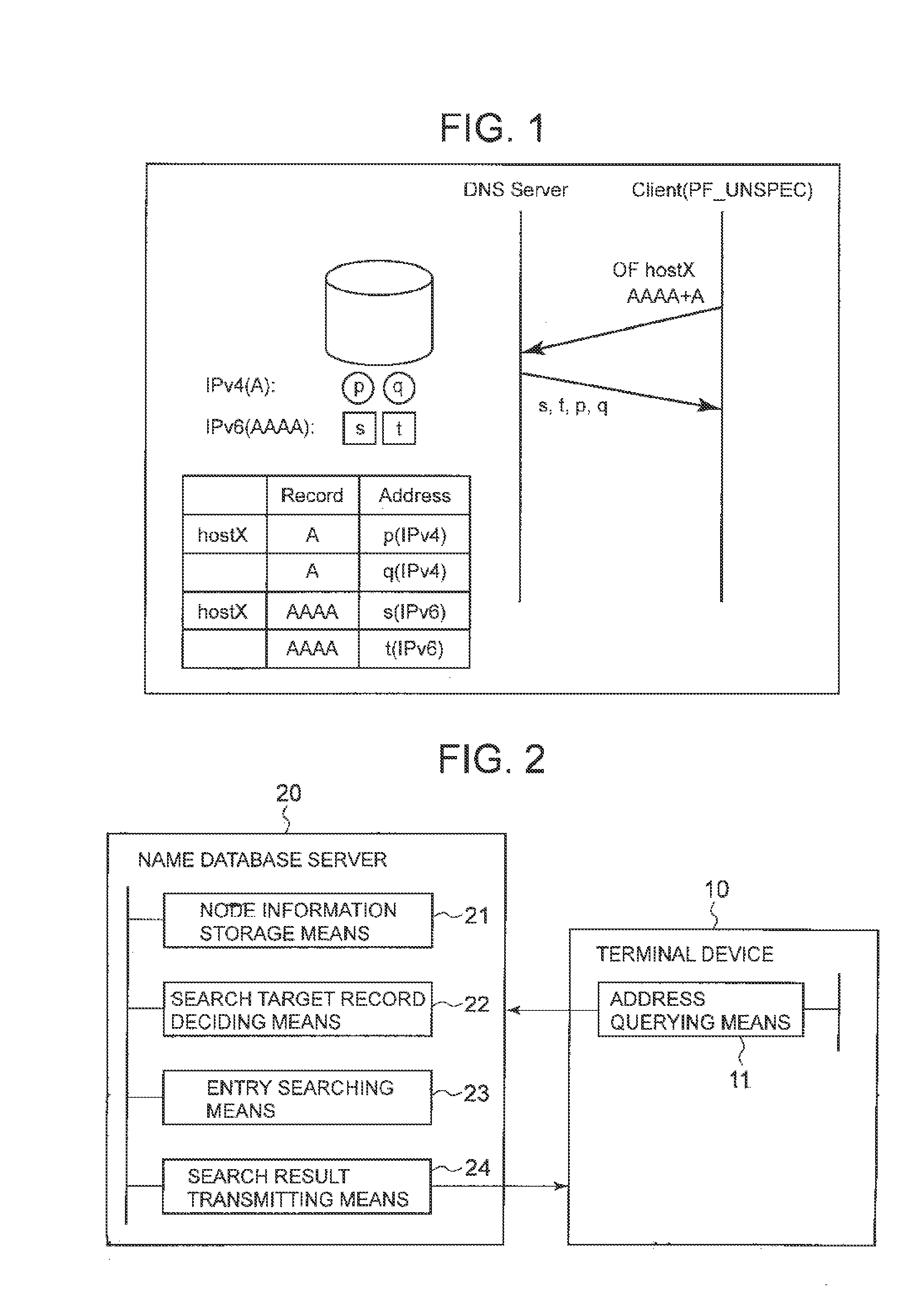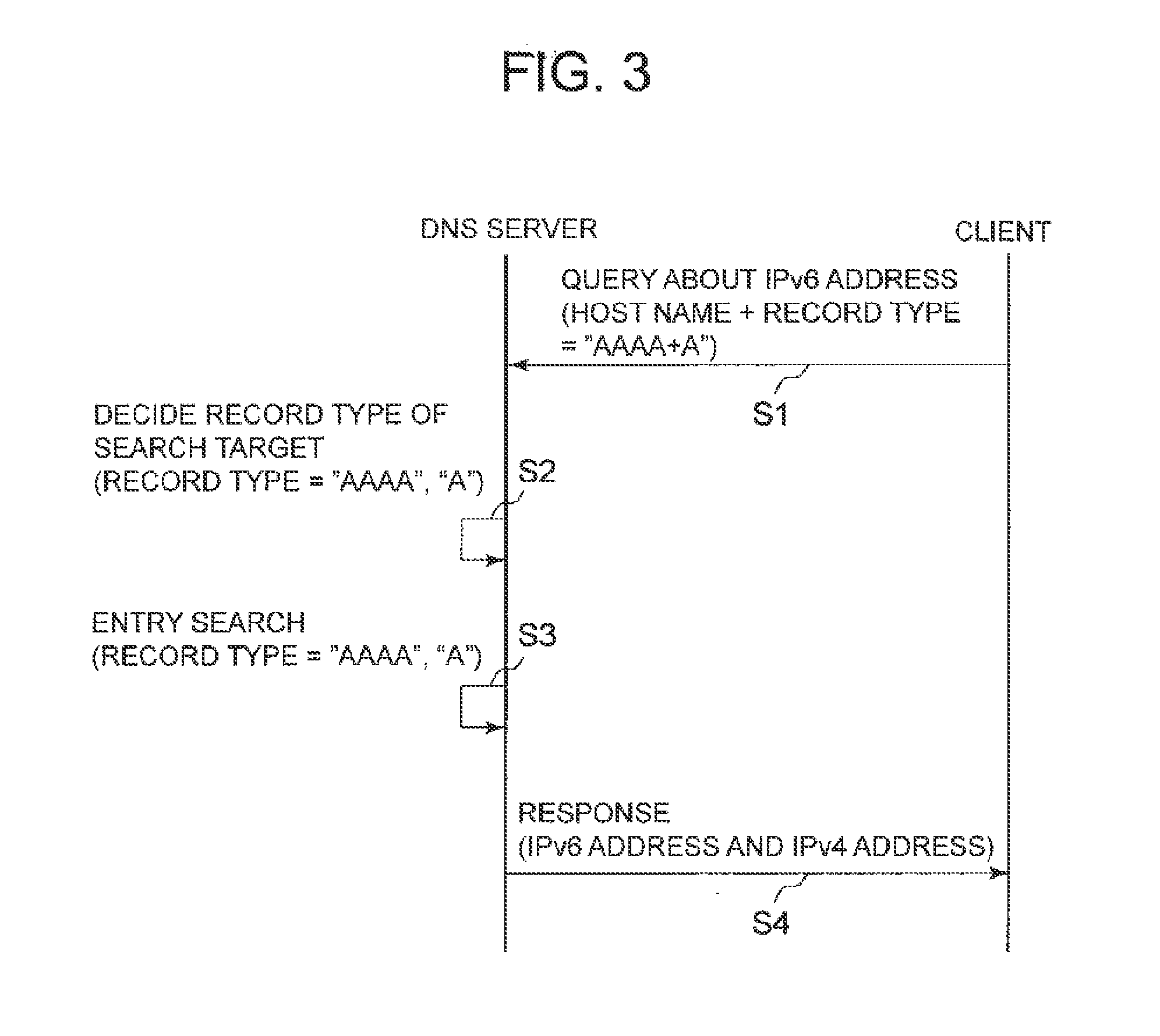Name database server, name resolution system, entry search method and entry search program
a name database and name resolution technology, applied in the field of name database servers, can solve problems such as difficulty in communication
- Summary
- Abstract
- Description
- Claims
- Application Information
AI Technical Summary
Benefits of technology
Problems solved by technology
Method used
Image
Examples
first exemplary embodiment
[0054]First, an outline of a name resolution system according to a first exemplary embodiment will be described with reference to FIG. 1. FIG. 1 is an explanatory diagram illustrating an example of an operation of performing name resolution. In the name resolution system according to the first exemplary embodiment, first, a client transmits a DNS query packet by which a host name (“hostX” in FIG. 1) of a target performing name resolution and a record type (“AAAA+A” in FIG. 1) are designated to a DNS server. Here, the designated record type “AAAA+A” is a virtual record type which is different from a record type stored in a DNS server such as “A” or “AAAA.”
[0055]Arbitrary information may be set to the virtual record type. For example, a record type which is not present in the existing DNS may be newly defined, and information representing the record type may be used as the virtual record type. In the following description, for the sake of convenience, the virtual record type is referr...
second exemplary embodiment
[0077]Next, an outline of a name resolution system according to a second exemplary embodiment will be described with reference to FIG. 4. FIG. 4 is an explanatory diagram illustrating an example of an operation of performing name resolution. In the name resolution system according to the second exemplary embodiment, first, a client transmits a DNS query packet by which a host name (“hostX” in FIG. 4) of a target performing name resolution and a record type (“AAAA” in FIG. 4) of an IPv6 address are designated to a DNS server. Next, the DNS server that has received the DNS query packet searches for an entry of the record type “A” as well as an entry of the designated record type “AAAA” among entries of the received host name. In the example illustrated in FIG. 4, as a result, addresses p, q, s, and t included in the entries matching the host name “hostX” are specified.
[0078]Then, the DNS server translates the IPv4 addresses p and q having the record type “A” into an IPv6 address which...
third exemplary embodiment
[0118]Next, an outline of a name resolution system according to a third exemplary embodiment will be described with reference to FIG. 7. FIG. 7 is an explanatory diagram illustrating an example of an operation of performing name resolution. The name resolution system according to the third exemplary embodiment generates an entry in which an IPv4 address is translated into an IPv6 address in advance when entries of both an IPv6 address and an IPv4 address are present on a host name. Specifically, FIG. 7 illustrates that IPv4 addresses p and q are translated (static-translated) into IPv6 addresses p′ and q′ at a predetermined timing, and then held in a magnetic disk or the like. In a table, a hatched portion represents a translated record.
[0119]In this state, first, a client transmits DNS query packet by which a host name (“hostX” in FIG. 7) of a target performing name resolution and a record type (“AAAA” in FIG. 7) of an IPv6 address are designated to a DNS server. Next, the DNS serv...
PUM
 Login to View More
Login to View More Abstract
Description
Claims
Application Information
 Login to View More
Login to View More - R&D
- Intellectual Property
- Life Sciences
- Materials
- Tech Scout
- Unparalleled Data Quality
- Higher Quality Content
- 60% Fewer Hallucinations
Browse by: Latest US Patents, China's latest patents, Technical Efficacy Thesaurus, Application Domain, Technology Topic, Popular Technical Reports.
© 2025 PatSnap. All rights reserved.Legal|Privacy policy|Modern Slavery Act Transparency Statement|Sitemap|About US| Contact US: help@patsnap.com



